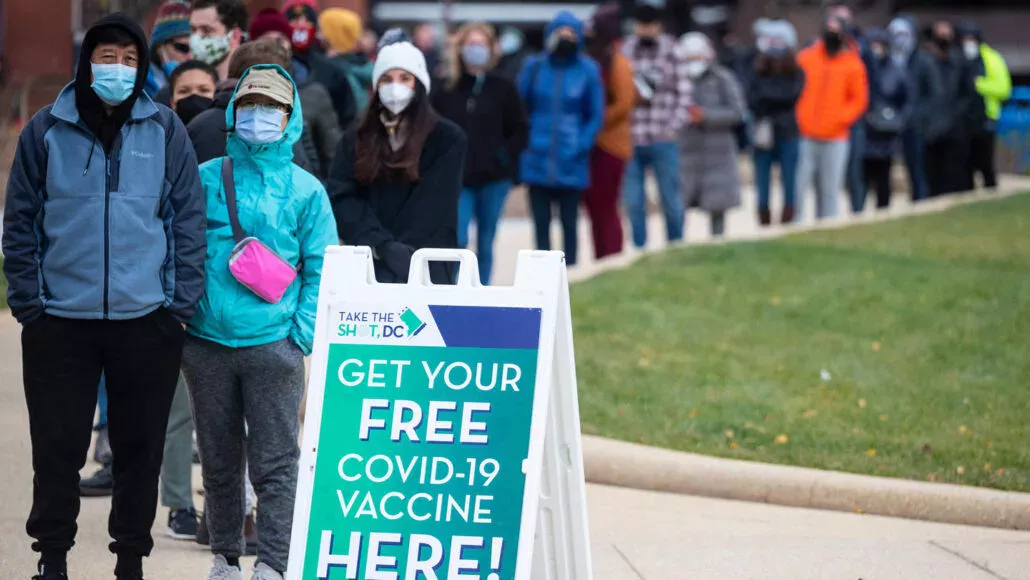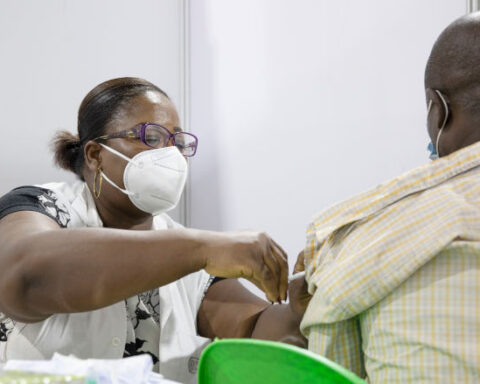The omicron offshoot’s ability to easily infect cells may be helping it spread rapidly in places
The omicron variant’s family tree has grown substantially over the last year. The brood now encompasses a subvariant soup with alphanumeric names such as BA.2, BA.5 and BF.7. The U.S. Centers for Disease Control and Prevention estimates that two versions — BQ.1 and BQ.1.1 — caused just over half of new infections in the United States during the week ending January 7.
Now, a newcomer dubbed XBB.1.5 seems poised for a rise to dominance. According to CDC estimates, it accounts for more than 80 percent of new cases in parts of the northeastern United States. For the week ending January 14, it was responsible for 43 percent of new cases across the country.
But while previous variants such as alpha, delta and the original omicron were linked to massive surges of new infections, it’s not yet clear whether XBB.1.5 is destined for a similar path (SN: 12/21/21). Preliminary evidence suggests the subvariant, nicknamed the Kraken in some circles, is more transmissible than its predecessors. That trait, however, is a hallmark of viral evolution — successful new variants must be able to outcompete their siblings (SN: 5/26/20).
For now, experts at the World Health Organization are keeping a close eye on XBB.1.5. But it’s too early to say whether it might take over the globe. Most cases currently come from the United States, the United Kingdom and Denmark.
Science News spoke with infectious diseases specialist Peter Chin-Hong of the University of California, San Francisco about the latest coronavirus variant to make headlines. The conversation has been edited for length and clarity.
What is the difference between XBB.1.5 and earlier versions of omicron?
Chin-Hong: There are lots of variants that get produced all the time. It’s a normal thing for the virus as the virus makes more copies of itself. It’s not exactly precise or accurate, so it makes errors, [which are the variants]. It’s kind of like a bad photocopy machine in the office.
XBB, a sibling of XBB.1.5, was scary — and that was seen in the fall of 2022 — because it was one of the most immune-evasive variants around. But the reason why XBB never took off around the world — it was really in Singapore and India — was that it didn’t really infect cells quite as well.
XBB.1.5 has the immune slipperiness of XBB, but it also has this new mutation that makes it easy to infect cells. So it’s kind of like a bulldog in not wanting to let go of the cell. Whereas XBB was kind of invisible, like it had the invisibility cloak from Harry Potter, it didn’t have the bite. But XBB.1.5 has the invisibility cloak, plus the bite.
Is that why it’s spreading so effectively in some areas?
Chin-Hong: We think so. Because to be very efficient at infecting cells is a really important superpower if you are a virus.
You can be invisible [to the immune system] all you want, but if you’re not infecting cells efficiently, you probably won’t be as infectious. That could be [the reason] XBB.1.5 is spreading, because it has both of those things going for it. Seeing how it’s crowding out the other variants now makes us worried that it’s something to pay attention to. And it’s accompanied by increasing cases and hospitalizations.
Previous variants were linked to big surges of infections. Can we expect the same of XBB.1.5?
Chin-Hong: It’s complicated. If it were March 2020, it would be a very simple answer: Yes. But in January of 2023, you have so much variation in the amount of experience people have toward COVID, even if it’s a different type.
You can have somebody who got infected two or three times plus they got vaccinated and boosted. That’s going to be somebody who’s going to be really, really well protected against getting seriously ill. Maybe they might get a cold. Maybe they wouldn’t even know they had an infection versus somebody who didn’t get vaccinated and never got exposed and they’re older. It might as well be March of 2020 for them.
That [second] kind of person is, for example, in China. In China, XBB.1.5 might cause a lot of problems. But XBB.1.5 going to, you know, the middle of Manhattan might not cause as many problems in a highly vaccinated and exposed group of people.
[Timing also matters] because we saw a lot of BQ.1, BQ.1.1 recently, and a lot of people got infected after Thanksgiving. This rise of XBB.1.5 is coming after a lot of people already got infected recently. So it probably won’t do as much damage as if you had a long lull and all of a sudden you have this new thing.
Do vaccines and treatments still work against it?
Chin-Hong: The new updated boosters generally work a little better than the old vaccines in terms of overall efficacy and preventing infection. But with these new slippery variants like XBB.1.5 … if you’re looking to prevent infections, even a mild infection, the vaccines are probably going to last maybe three months.
But if you’re talking about preventing me from dying or going to the hospital, those vaccines are going to give me a boost of protection for many, many months, probably until next winter for most people. For older people, older than 65, if they’re not boosted today, then it’s a problem.
[Drugs such as] Paxlovid and remdesivir work independent of the spike protein [the part of the virus targeted by vaccines but where many of the defense-evading mutations are (SN: 3/1/22)]. So it doesn’t matter what invisibility cloak the variant has. They’re going to work because they work on shutting down the virus factory, which is one of the early steps, before the spike protein gets made.
So they will work no matter what [spike] variant comes along, which is a good thing. Even if you didn’t get vaccinated or never got exposed, if you got diagnosed and you get early therapy, it will cut down your hospitalization rates substantially.
Now, all monoclonal antibodies don’t work. [The virus has changed too much (SN: 10/17/22).]
Why is it that only omicron variants are popping up?
Chin-Hong: I think omicron has hit on a magical formula. It’s going to be hard to kick it off the gold medal stand. It’s so good at transmission, and all these other aspects that are good for the virus.
In the [earlier] days, it was two or three months, and you had a new coronavirus variant somewhere in the world. Now it’s been omicron since two Thanksgivings ago.
With each variant more transmissible than the last, is it inevitable that everyone will get COVID?
Chin-Hong: The people who didn’t get infected before are going to have a really, really hard time escaping this one. But it’s not impossible. It’s just going to be harder and harder, not only because XBB.1.5 is so transmissible, but also because we don’t have so many restrictions anymore. You’re going to the grocery store, nobody’s wearing a mask or you don’t feel like you have peer pressure to wear masks. So you’re going to get exposed just like you get exposed to colds….
But you can reduce the risk in the short term by getting a booster, if you haven’t already gotten one. And certainly [the booster] can reduce the risk of dying, particularly if you’re older or immune-compromised….
[People still wearing masks] have to wear really good quality masks [such as KN95s] because you can’t rely on everybody else wearing masks anymore.
How worried should people be about XBB.1.5?
Chin-Hong: The world is divided into two groups of people. The people whose bodies are very, very experienced with COVID — it’s gotten vaccines or boosting or … a couple of infections. And then there are people whose body isn’t well-experienced with COVID. For that [latter] group, they should be worried.
For someone, you’re looking around and your neighbor got it and nothing happened, or your cousin or a person at work, and it’s like it’s no big deal. But there are still 500 people dying every day in the United States [from COVID]. And to those people, it’s a huge deal….
It’s a weird situation because it’s not one-size-fits-all anymore, and different people have different levels of risk.






